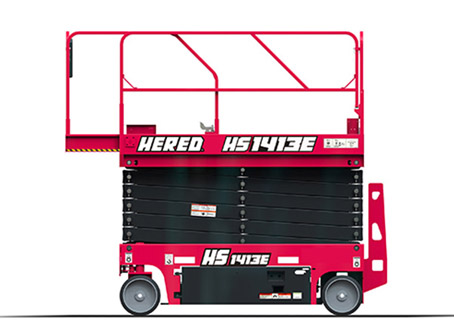Guide to Scissor Lifts
People build a lot of things taller than you. How do you reach those heights? Many times, you need special equipment. Scissor lifts are one of the most popular types of aerial work platforms. They come in two types, rugged terrain, and electric. Which one is best for your needs? It depends on the job. Here's a guide to scissor lifts and what rugged terrain is.
What Scissor Lifts Do?
You want your employees to feel safe on the job. You also want to reduce job site accidents. That's why you need to rent a scissor lift.
These machines lift workers to heights that are unattainable by other means. Scissor lifts include a safety harness to protect workers from falls. They also lift heavy objects, saving workers from trouble. Scissor lifts are powerful pieces of equipment and a worker's best friend.
Scissor lifts can lift objects 10 to 60 feet high. Most jobs are in the 20- to 40-foot range. That's two to four stories high. There are several advantages to scissor lifts as tools. These machines don't just lift workers into the air; they also enable people to get work done at high levels by placing platforms on them.
You can simplify a huge scissor lift into a form of storage that fits anywhere. When the job is done, scissor lifts take up very little space. These units fold into smaller shapes, squares, or rectangles. Some scissor lifts are only 5 feet tall and less than 3 feet wide. Their size and practicality make them very useful.
Electric Scissor Lifts
There are two basic forms of scissor lifts. The electric scissor lift is the one that most people use. They are perfect for indoor tasks. Your warehouse is a good example of where you need an electric scissor lift.
The rows in the building are tight and you may have little to no room to move. You need a device that can lift items to higher shelves. You may also need workers to work at those heights. These scissor lifts can lift people 19 to 40 feet.
An electric scissor lift usually runs on batteries. It doesn't give off any fumes that can cause problems in tight spaces. You can recharge it at your convenience, so you don't have to pay for gas. Some scissor lifts have a dual design. These lifts use gas or batteries.
Rough Terrain Scissor Lifts
Some of your work will be done outdoors. You may be working on uneven and uneven terrain. That's when you may need a rugged terrain scissor lift. Manufacturers build these machines to work in rough areas. A rugged terrain scissor lift is a four-wheel drive. It also has reinforced tires to prevent flat tires.
The purpose of a rugged terrain scissor lift is to lift people and cargo off the ground. This scissor lift does not require a flat base to lift safely.
Rough terrain scissor lifts rarely have a battery engine. Sometimes you may find dual units. However, most of these machines use gasoline. The reason for this is that scissor lift batteries usually last about eight hours. They must then be recharged in a similar amount of time. You may need to manually drive the unit to your work side. Then, you will need to run it. Finally, you will have to drive it back. Eight hours of battery life is not enough for a full workday. That's why rugged terrain engines use gasoline instead.
If your workday is short, you don't need a rugged terrain scissor lift. You are also not suitable for flat terrain. The main purpose of these machines is to work on any uneven terrain.
What makes rugged terrain?
Rough terrain scissor lifts can even work on slopes. This is important when you are working on uneven land. This particular scissor lift can still lift workers and materials into the air.
You need to know how much the slope is. Rough terrain units use a measurement called slope. It shows how much slope the machine can handle. Climbing capacity ranges from zero to 40%. When you are ready to rent a unit, ask for advice on the climbing capacity you need.
Rough terrain scissor lifts are useful. When you are working outdoors, you may need a scissor lift for rough terrain. Once you know the type of terrain you will be dealing with, you can rent the right equipment for you. Renting can help you save money when you need the equipment and not have to store it when you don't.




